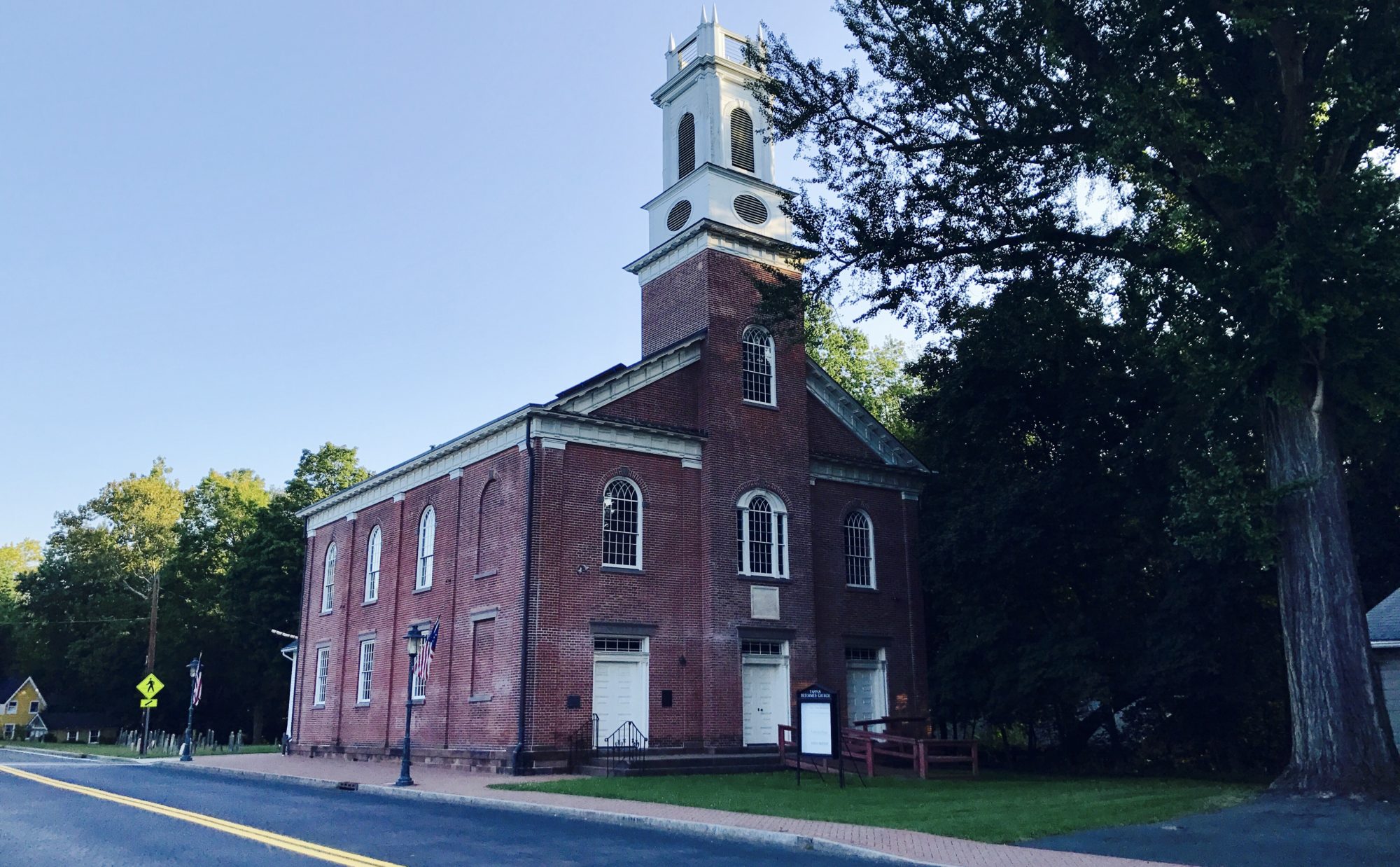History
On the morning of March 16, 1836 Rev. Isaac D. Cole left the newly constructed manse annex and walked through a late winter snowfall toward the congregation’s third building dedication service in 141 years. Along the way he saw 270 family sleighs working their way from every direction toward the recently completed federal style sanctuary across the snow covered manse green.
These families represented the renewed spirit of industrializtion and intellectual and spirtual curiosity that was moving across the American landscape. Their Netherlands ancestors had cleared the surrounding fields and hillsides of the now expanding community. Some of these families had fathers and grandfathers who fought for the nation’s independence fifty years earlier and were present when when Major John Andre was tried and convicted for treason as a British spy in the previous church building.
Historic Architecture
“The Calvinists wanted the light back–pure light, pure clear light, for reading and hearing the word of God. What interested the Calvinists was not the mystical Kingdom of Heaven but the dynamic Sovereignty of God. The public square outside the church’s walls should be the realm of our Lord’s righteousness, and the communion of saints should be apparent in the life of the republic. There was a premium on light for worship so that the assembled saints might read their psalms and prayers and, I suspect, also see each other and be seen. I love the light you get in old churches with great clear windows: the clarity of vision, the gleam on painted wood, and the warmth of illuminated brick. Their special atmosphere is celebrated by Dutch genre painters like Pieter Jansz Saenredam.”
These thoughts by Reformed Church in America pastor Daniel Meeter of the Old First Reformed Church of Brooklyn, New York remind us of the clarity of the missional vision at work in our history as well as the heart of our continued commitment to our community and region today.
